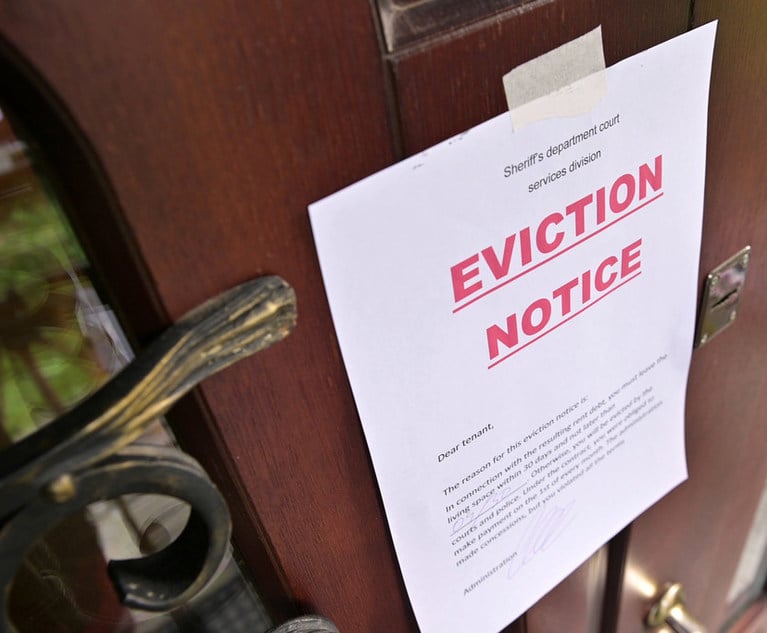Due to the long-term nature of ground leases, the rent that was initially negotiated between the parties may lag behind market ground rents after a period of time, even with fixed or consumer price index (CPI)-based increases. As a result, ground lessors often insist on rent reset clauses on a periodic basis so that the ground rent captures some of the increase in land values. While there are many variations, a “typical” rent reset clause provides that at predetermined times during the term of the lease (e.g., every 20 or 25 years), the rent will be increased to an amount equal to a percentage (typically 5-6%) of the then fair market value of the land (usually determined as if free and clear of liens and encumbrances, including the lease, and vacant and exclusive of the improvements). The purpose behind rent reset clauses is simple—to capture any change in the fair market value (and fair market rental value) of the leased property. However, the application of rent reset clauses in practice is anything but simple, and the consequences of such clauses can be significant. While landlords favor rent reset clauses because they believe fixed percentage or CPI adjustments rarely keep pace with increases in the value of real property over the long run, tenants and their lenders[1] are increasingly objecting to typical rent reset clauses in ground leases because of the risk and uncertainty that they can pose. While the parties would ideally negotiate to reach settlement on the fair market value of the leased property, and therefore, the new rent, this often does not happen in practice. When the parties are unable to agree on the new rent, an arbitration or litigation usually ensues and the parties become subject to the unpredictability of a third-party decision. The consequences of a rent reset can be dire, resulting in the tenant not being able to finance its interest in the property[2] or even losing its lease.[3]
Interpretation and Implementation
One set of complications in the application of typical ground rent reset clauses relates to the interpretation of such clauses. Some considerations may not have been addressed in the lease provisions while others, even though addressed, may not have been thought through or are otherwise unclear, leading to disputes between the parties. For example, the parties are not always explicit as to just what is being valued. Is it just the land, or the land with the improvements that the tenant constructs on the land? If it is just the land, should it be valued vacant and unencumbered, as if the lease did not exist, or should the lease be somehow taken into account? If the lease makes clear that the leased property is to be valued unencumbered by the lease, then an appraiser will likely value the land assuming it will be used for its unrestricted “highest and best use,” which can result in a large increase in the rent payable for the rent reset period at issue since the highest and best use is not always consistent with what has actually been constructed on the land and the use and other restrictions in the lease. However, note that unless the parties have explicitly provided that the land is to be valued unencumbered by the lease (or words of similar effect), a court will likely determine that the land is to be valued as encumbered by the lease.[4] This is evident in several New York court rulings, including in United Equities v. Mardordic Realty,[5] 936 Second Avenue L.P. v. Second Corporate Development Co., Inc.,[6] and Plaza Hotel Associates v. Wellington Associates, Inc.[7] If the parties decide that the fair market value of the leased property is to be determined as encumbered by the lease (or do not provide for the contrary), the parties should also carefully consider what terms of the lease should matter for purposes of valuing the property. For example, should only the use provisions of the ground lease matter, or should the remaining term of the ground lease (including rights to extend or renew), purchase options, preemptive rights (such as rights of first refusal) and other restrictions or requirements (e.g., that the improvements cannot exceed a certain size) in the ground lease also be taken into account? Beyond the considerations described above, there are additional issues that may not have been considered during the lease negotiations and may only be brought to light when the rent reset period is imminent. Some examples are:
Assemblage Value: If the leased property is a part of an assemblage or combined zoning lot, should the fair market value of the leased property include the value of any additional development rights that the site is then entitled to use? On the one hand, without the leased property, the tenant would not have been able to obtain the additional development rights and increase the size of its development. On the other hand, the tenant may have paid for the additional development rights and done the leg work in creating the assemblage. Construction Issues: Should construction issues due to site limitations (e.g., difficulty due to limited street space for trucks, etc.) be taken into account? On the one hand, construction issues can to some extent be managed by the tenant in its construction staging and development plans, and may even be caused by the tenant. On the other hand, site limitations can be fundamentally tied to the land itself. Timing of Valuation: Instead of setting the valuation date as the rent reset date, should there be multiple valuation dates to account for the possibility of the rent reset date falling in the middle of a real estate recession or boom? Choosing a single valuation date can result in a rent that is drastically different from the one that was previously being paid, and the results of such valuation have long term consequences as the next rent reset period may not be for another 20 or more years. Tax Abatements: Should tax abatements, which would make a property more valuable while the abatement is in effect, be taken into account in determining the fair market value of the leased property? On the one hand, the landlord may have cooperated with the tenant in obtaining the tax abatement and, but for the landlord’s cooperation, the tenant would not have been able to obtain such tax benefit. On the other hand, the tenant may have been the one to apply for, and do all the work necessary to obtain, the tax abatement. The tenant may also have realized reduced cash flow (for example, by agreeing to an affordable housing requirement) in order to obtain the tax abatement. Regulatory Requirements: Should the fair market value be subject to regulatory requirements (such as rent stabilization and rent control laws, landmark regulations, etc.), which can reduce the fair market value of the leased property? On the one hand, regulatory requirements are often tied to what is ultimately built on the leased land, in which case they should not affect the value of such land if it is to be valued vacant and unimproved. On the other hand, not taking into account the regulatory requirements may be viewed as unrealistic and punitive to the tenant since what has been built will continue to be subject to such regulatory requirements. Zoning Changes: Should a change in zoning (whether it is an upzoning or a downzoning) affect the fair market value of the leased property? Should it make a difference if the tenant can or cannot alter its development or building to take advantage of an upzoning? Conversely, if a building is a legal nonconforming use, should the fair market value of the land be reduced because of a downzoning? On the one hand, zoning regulations are an integral factor in determining the value of a piece of land. On the other hand, what the tenant has built will most likely not be affected by a change in zoning.


 Peter E. Fisch and Mitchell L. Berg
Peter E. Fisch and Mitchell L. Berg




